NVIDIA 3D Vision: ready for prime time?
The face of PC gaming is changing, and it's taking on a whole new dimension. While frame rates and image quality continue to improve year-on-year, what's arguably the biggest graphical innovation in recent months is the realisation of 3D gaming.
Spearheaded by NVIDIA's 3D Vision technology I believe that the PC's use of stereoscopic three-dimensional visuals has improved to the point at which it can no longer be branded as merely a flash-in-the-pan gimmick.
I've had issues with the technology in the past, but 3D Vision's shortcomings have, for the most part, rested with the accompanying multimedia content. Games quite simply haven't provided the desired 3D wow factor, and titles that gave it a shot were often impaired through poor three-dimensional effects, on-screen artifacts and little visible addition of depth. But if you thought 3D Vision's days were numbered (we'll admit it, the thought had crossed my mind), you might just been wrong.
In the days leading up to the launch of NVIDIA's crown jewel - the GeForce GTX 580 graphics card - I was able to revisit 3D Vision and put some of the latest titles to the test. My conclusion? 3D Vision might now be ready to finally deliver some of the wow factor it once sorely missed.
3D Vision coming of age
The technology still puts up a few hurdles for the consumer to overcome - namely the costs associated with the required parts - but once you're up and running, the experience can be rewarding; it ultimately brings something new and fresh to a PC gaming industry that has for many years grown stagnant.
I've often criticised the PC gaming industry for its lack of compelling games, and frequently pointed out that although the new crop of graphics cards are mighty quick, they're of little use without triple-a titles that make them shine. 3D Vision, as it turns out, might just provide some of that lustre which brings me back to the PC.
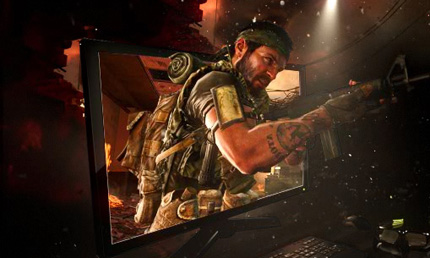
I recently picked up a copy of Call of Duty: Black Ops for the PlayStation 3 - yes, even hardened PC enthusiasts have resorted to console gaming - but was left disappointed by the game's lacklustre visuals. Truth be told, the game looks far better on the PC - no mean feat considering it's a DX9 title - and with the addition of 3D Vision, I'd argue the experience is better, too. Sure, you can get the 3D visuals on the PlayStation, but the PC's superior image quality adds clarity as well as depth. It's one of the first 3D games to truly impress, and many in-game sequences make full use of the three-dimensional space to rather good effect.
And the 3D makeover isn't just applicable to first-person shooters. Civilisation V, a turn-based strategy game, is probably the last place you'd expect to find three-dimensional treats, but it, too, is a title that in my estimation looks better in 3D.
But while the software's improving, there's still a long way to go, I believe. Truly-stunning 3D games are still few and far between, and the 3D ecosystem as a whole is crying out for more content. The number of 3D Blu-rays is limited, and though NVIDIA is hoping to see an explosion of web-based 3D content, I've yet to see it happen.
There's also the hardware and financial obstacles to overcome. At present, NVIDIA 3D Vision requires four costly components that together provide the three-dimensional image.
3D Vision Requirements

NVIDIA 3D Vision Kit
The most distinguishable part of NVIDIA 3D Vision is the stereoscopic active-shutter glasses found in the 3D Vision Kit. These special glasses connect to the PC via wireless infra red and process images sent by an NVIDIA graphics card and special display.
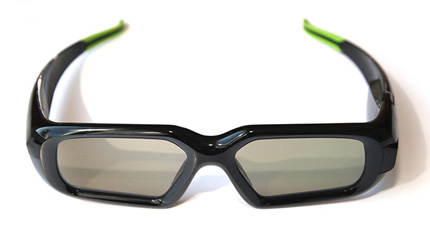
Compiled by the NVIDIA GeForce card and software driver and delivered from a special 120Hz display, each eye is shown a slightly different image at a 60Hz refresh rate. The eye-specific image is made possible by the use of active-shutter glasses. Your brain then meshes these slightly different images together to form a single on-screen image that appears to have depth. In other words, it’s this stereoscopic effect that provides 3D.
120Hz monitor or projector
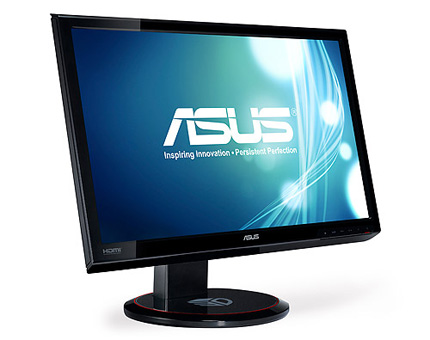
This is why NVIDIA 3D Vision requires a certified monitor or projector to operate at 120Hz, thereby providing each eye with a smooth, flicker-free 60Hz. NVIDIA has a list of 20 or so monitors/projectors that are deemed 3D Vision-ready, and you can read our review of the pictured ASUS screen by clicking here.
Interestingly, because the monitor is displaying slightly different images, intended for the left and right eyes and processed by the active-shutter glasses, looking at a 3D-ready monitor without glasses presents a blurry image.
3D-ready GeForce graphics card
The last part of the 3D Vision jigsaw is the NVIDIA GeForce graphics card. At the time of writing, NVIDIA supports 3D gaming on GeForce 8-series cards onwards.

What’s important to note is that gaming performance will drop when running in 3D Vision mode. The reason for this, as you will probably have gathered by now, lies with the need to provide two sets of images for 3D, thereby reducing performance by up-to 50 per cent when compared with a non-3D setup.
3D Blu-ray playback, achieved by using third-party software from companies such as CyberLink and Arcsoft, is supported on GeForce 300-series, 400-series and 500-series graphics cards. For a full list, please head on over to here.
The other pieces of the 3D Vision jigsaw
If you'd added up the costs of the above-listed components, you've probably come to realise that 3D Vision is something of a premium solution. There's simply no getting past it; a high-end setup will cost in excess of one thousand pounds, and if you're planning on enjoying the 3D experience with friends and family, each additional pair of active-shutter glasses will set you back a further £90.
Until prices drop, I believe that it's arguably a technology which is limited to enthusiast users. But if you fall into that category, there are plenty of eye-catching features that could convince you to part with your hard-earned cash.
3D Vision is now appearing on premium laptops, bringing the parts of the jigsaw together in a mobile form factor. Much like the PC counterpart, while potentially looking impressive, mobile 3D is an expensive proposition right now, with very few compliant laptops priced under £1,000.
3D Vision Surround
A recent development in NVIDIA’s 3D Vision program is called 3D Vision Surround. As the name implies, the technology enables the user to view 3D images on more than one screen.
3D Vision Surround works in exactly the same way as one-screen 3D Vision. The obvious difference is that the 3D image is rendered over multiple screens, usually three matched monitors, providing an ultra-wide resolution of up-to 5,760x1,080, along with a wraparound effect.
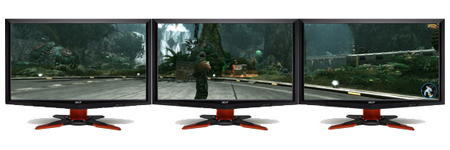
However, whilst the end result is impressive, NVIDIA’s graphics architecture is such that a single card can only output to a maximum of two displays at once. This means that users contemplating a three-screen 3D Vision Surround system need to have two GeForce graphics cards run in multi-GPU SLI mode - a further expenditure.
3DTV Play
The latest addition to 3D Vision's value proposition is the launch of 3DTV Play. The free update, available as part of NVIDIA's latest driver release, allows users to output 3D content to a big-screen 3D TV using a HDMI 1.4 connection.
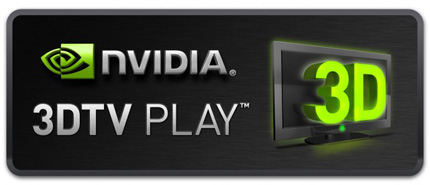
The benefits of 3DTV Play are obvious; you can use it to push your PC's 3D content to a big-screen display. Taking the 3D experience into the living room is a natural step, and one that could make 3D Vision PCs a central part of your home theatre. Yet, like so many other 3D Vision components, 3DTV Play is inhibited by a strict set of requirements - at the very least, you'll need a supported 3D TV.
Cutting a long story short(er)
3D content still has a long way to go, and I'm genuinely divided on its suitability in all areas of life; I still enjoy it far more at the cinema than I do in the living room.
The PC is somewhere in between, and though the computer's 3D experience has historically disappointed, it's now starting to prove its worth. Through the release of better 3D-capable games, my 3D Vision lenses are no longer sat around collecting dust, and my £35 PS3 copy of Black Ops is about to be traded in.
NVIDIA's 3D Vision, then, is a work in progress. It can look absolutely fantastic at times, given the correct interaction of software and hardware, but NVIDIA needs to continue working hard with developers to ensure that upcoming triple-A games have integrated support for 3D from the get-go. The company also needs to continue pushing non-gaming 3D - pictures, films, etc. - as a worthwhile reason for investment, and I reckon that increased content in 2011 will provide the necessary stimulus on this front. Thinking about it for a moment, I'd give 3D Vision a 'B-' rating at the end of 2010.
Looking forward to 2011, in order to really succeed, NVIDIA has to take a lead role in lowering the financial barriers to 3D entry - cheaper active-shutter glasses and, perhaps, NVIDIA-led rebates on 3D screens, together with sub-£1,000 3D Vision-totin' laptops. Ultimately, I believe that the nascent ecosystem will only flourish once it is widely available in the mainstream market, be it for the PC or laptop. Right now, it remains too expensive for Joe Average.













